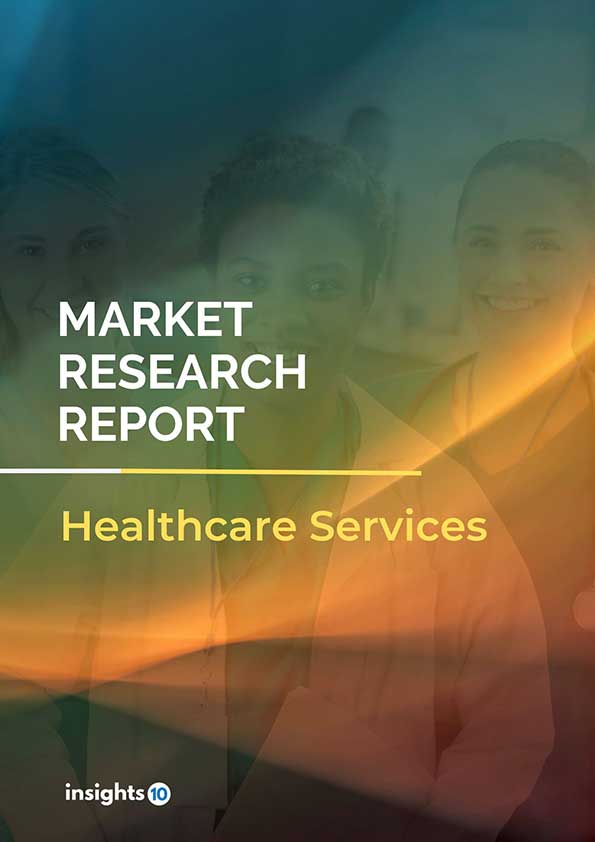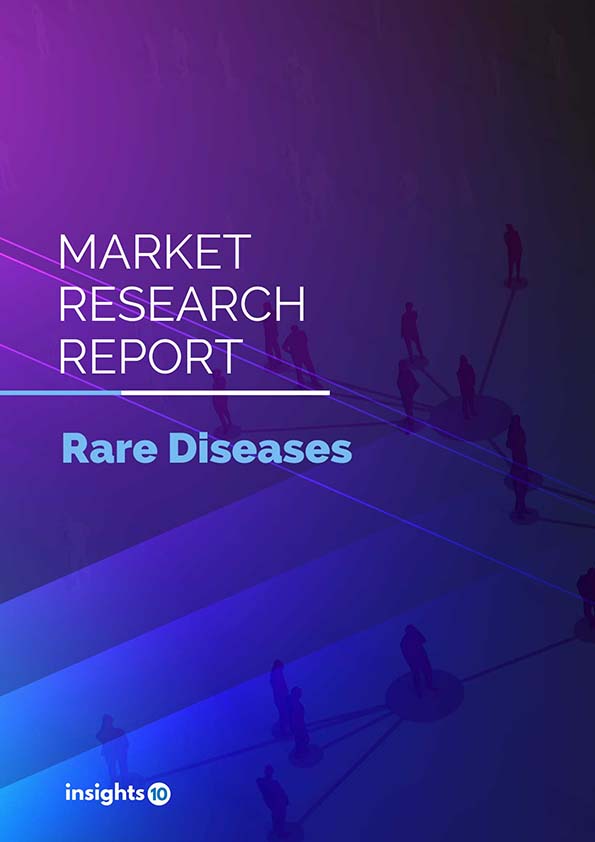Brazil Genomic Diagnostics Market Analysis
Brazil Genomic Diagnostics Market was valued at $816.25 Mn in 2023 and is predicted to grow at a CAGR of 17.5% from 2023 to 2030, to $2,523.99 Mn by 2030. The key drivers of this industry include the high burden of chronic diseases, technological advancements, and personalized medicine. The industry is primarily dominated by Illumina, 23andMe, Myriad Genetics, and Amgen among others.
Buy Now

Brazil Genomic Diagnostics Market Executive Summary
Brazil Genomic Diagnostics Market was valued at $816.25 Mn in 2023 and is predicted to grow at a CAGR of 17.5% from 2023 to 2030, to $2,523.99 Mn by 2030.
Genomic diagnostics is a rapidly evolving field that uses an individual's genetic information to diagnose diseases, assess predisposition to future health problems, and guide treatment plans by analyzing DNA or RNA for disease-linked variations. This includes karyotyping to examine chromosome abnormalities, targeted mutation analysis for specific disease-related genes, and next-generation sequencing (NGS) for a comprehensive genetic analysis. Applications encompass disease diagnosis, carrier testing for informed family planning, predictive testing for disease risk assessment, and pharmacogenomics for personalized medication treatments. The benefits of genomic diagnostics include early disease detection, personalized medicine, and improved disease management and prognosis.
Prevalence of chronic non-communicable diseases (NCDs) in Brazil is significant, with about three out of four deaths in 2017 attributed to NCDs, despite a 35% reduction in NCD deaths from 1990 to 2017. In 2021, 43% of Brazilians had at least one chronic disease, with higher rates in the Southeast region, among white and Indigenous individuals, women, and those with lower education and socioeconomic status. By age 60, approximately 70% of Brazilians have at least one chronic disease, with the likelihood of multiple chronic diseases increasing significantly with age.
Market is therefore driven by significant factors like the high burden of chronic diseases, technological advancements, and personalized medicine. However, high costs, ethical concerns, and a lack of skilled professionals restrict the growth and potential of the market.
A prominent player in this field is Illumina, which has partnered with AstraZeneca to leverage genomics and AI for faster drug development by identifying new therapeutic targets and biomarkers, 23andMe acquired Lemonaid Health to enhance its personalized healthcare offerings through telehealth and prescription drug delivery services based on genetic information. Other contributors include Myriad Genetics, and Amgen among others.

Market Dynamics
Market Growth Drivers
High Burden of Chronic Diseases: In Brazil, where non-communicable diseases (NCDs) like cardiovascular diseases, cancers, chronic respiratory diseases, and diabetes accounted for 74% of all deaths, the increasing prevalence of these chronic diseases underscores the crucial role genomics can play in early detection, diagnosis, and personalized treatment.
Technological Advancements: Rapid advancements in sequencing technologies and data analysis are significantly enhancing the accessibility and affordability of genomics. These innovations are reducing costs and improving the accuracy of genetic information. As a result, more healthcare providers can integrate genomic data into patient care. This progress is accelerating the adoption of genomics in various medical fields.
Personalized Medicine: The shift towards personalized medicine, where treatments are tailored to an individual's genetic makeup, is a major driver for genomics. Personalized medicine offers the potential for more effective and targeted therapies. This approach is revolutionizing patient care by focusing on individual genetic profiles. As a result, the demand for genomic data is steadily increasing.
Market Restraints
High Costs: Genomics technologies can be expensive, limiting accessibility, especially in developing countries like Brazil. The high costs of equipment and procedures restrict widespread adoption. This financial barrier makes it difficult for many healthcare facilities to implement genomic technologies. Consequently, many patients cannot benefit from the advancements in genomic diagnostics.
Ethical Concerns: Issues related to data privacy, genetic discrimination, and ethical implications of genomics can hinder market growth. Concerns about how genetic information is used and protected are significant. Fear of misuse and discrimination based on genetic data can deter individuals from undergoing testing. Addressing these ethical issues is crucial for the responsible advancement of genomics.
Lack of Skilled Professionals: A shortage of trained professionals in genomics can impede market development. The field requires highly specialized knowledge and skills. Without adequate training programs and educational opportunities, the workforce remains insufficient. This gap hinders the integration of genomic technologies into healthcare systems, slowing overall progress.
Regulatory Landscape and Reimbursement Scenario
Brazil's regulatory landscape for the healthcare and genomics diagnostics sector is complex, involving several key bodies. ANVISA (Agência Nacional de Vigilância Sanitária) is responsible for regulating and approving new genomic tests, ensuring their safety and efficacy. The Federal Council of Medicine (CFM) sets ethical guidelines and professional conduct standards for medical professionals, including those in genomics. The Ministry of Health (MS) oversees broader healthcare policies, including those related to diagnostics and reimbursement.
Reimbursement for genomic diagnostics in Brazil is influenced by various factors. The public healthcare system (SUS) gradually includes genomic tests in its reimbursement basket, focusing on those with proven clinical utility and cost-effectiveness. Private health insurance plans offer varying levels of coverage, with some tests covered and others limited or excluded. Many patients rely on out-of-pocket payments, which can be financially burdensome. Reimbursement challenges include a lack of robust clinical evidence for many tests, high costs, and a complex regulatory environment involving multiple bodies.
Competitive Landscape
Key Players
Here are some of the major key players in the Brazil Genomic Diagnostics
- Illumina, Inc.
- Myriad Genetics, Inc.
- Amgen, Inc.
- 23andMe
- AncestryDNA
- DASA
- F. Hoffmann-La Roche AG
- Fleury
- Danaher Corporation
- Hermes Pardini
1. Executive Summary
1.1 Service Overview
1.2 Global Scenario
1.3 Country Overview
1.4 Healthcare Scenario in Country
1.5 Healthcare Services Market in Country
1.6 Recent Developments in the Country
2. Market Size and Forecasting
2.1 Market Size (With Excel and Methodology)
2.2 Market Segmentation (Check all Segments in Segmentation Section)
3. Market Dynamics
3.1 Market Drivers
3.2 Market Restraints
4. Competitive Landscape
4.1 Major Market Share
4.2 Key Company Profile (Check all Companies in the Summary Section)
4.2.1 Company
4.2.1.1 Overview
4.2.1.2 Product Applications and Services
4.2.1.3 Recent Developments
4.2.1.4 Partnerships Ecosystem
4.2.1.5 Financials (Based on Availability)
5. Reimbursement Scenario
5.1 Reimbursement Regulation
5.2 Reimbursement Process for Services
5.3 Reimbursement Process for Treatment
6. Methodology and Scope
Brazil Genomic Diagnostics Market Segmentation
By Technology
- Next Generation Sequencing
- Array Technology
- PCR-based Testing
- FISH
- Others
By Application
- Ancestry & Ethnicity
- Traits Screening
- Genetic Disease Carrier Status
- New Baby Screening
- Health and Wellness-Predisposition/Risk/Tendency
By Product
- Consumables
- Equipment
- Software & Services
By End-user
- Hospitals & Clinics
- Diagnostic Laboratories
- Others
Methodology for Database Creation
Our database offers a comprehensive list of healthcare centers, meticulously curated to provide detailed information on a wide range of specialties and services. It includes top-tier hospitals, clinics, and diagnostic facilities across 30 countries and 24 specialties, ensuring users can find the healthcare services they need.
Additionally, we provide a comprehensive list of Key Opinion Leaders (KOLs) based on your requirements. Our curated list captures various crucial aspects of the KOLs, offering more than just general information. Whether you're looking to boost brand awareness, drive engagement, or launch a new product, our extensive list of KOLs ensures you have the right experts by your side. Covering 30 countries and 36 specialties, our database guarantees access to the best KOLs in the healthcare industry, supporting strategic decisions and enhancing your initiatives.
How Do We Get It?
Our database is created and maintained through a combination of secondary and primary research methodologies.
1. Secondary Research
With many years of experience in the healthcare field, we have our own rich proprietary data from various past projects. This historical data serves as the foundation for our database. Our continuous process of gathering data involves:
- Analyzing historical proprietary data collected from multiple projects.
- Regularly updating our existing data sets with new findings and trends.
- Ensuring data consistency and accuracy through rigorous validation processes.
With extensive experience in the field, we have developed a proprietary GenAI-based technology that is uniquely tailored to our organization. This advanced technology enables us to scan a wide array of relevant information sources across the internet. Our data-gathering process includes:
- Searching through academic conferences, published research, citations, and social media platforms
- Collecting and compiling diverse data to build a comprehensive and detailed database
- Continuously updating our database with new information to ensure its relevance and accuracy
2. Primary Research
To complement and validate our secondary data, we engage in primary research through local tie-ups and partnerships. This process involves:
- Collaborating with local healthcare providers, hospitals, and clinics to gather real-time data.
- Conducting surveys, interviews, and field studies to collect fresh data directly from the source.
- Continuously refreshing our database to ensure that the information remains current and reliable.
- Validating secondary data through cross-referencing with primary data to ensure accuracy and relevance.
Combining Secondary and Primary Research
By integrating both secondary and primary research methodologies, we ensure that our database is comprehensive, accurate, and up-to-date. The combined process involves:
- Merging historical data from secondary research with real-time data from primary research.
- Conducting thorough data validation and cleansing to remove inconsistencies and errors.
- Organizing data into a structured format that is easily accessible and usable for various applications.
- Continuously monitoring and updating the database to reflect the latest developments and trends in the healthcare field.
Through this meticulous process, we create a final database tailored to each region and domain within the healthcare industry. This approach ensures that our clients receive reliable and relevant data, empowering them to make informed decisions and drive innovation in their respective fields.
To request a free sample copy of this report, please complete the form below.
We value your inquiry and offer free customization with every report to fulfil your exact research needs.








































